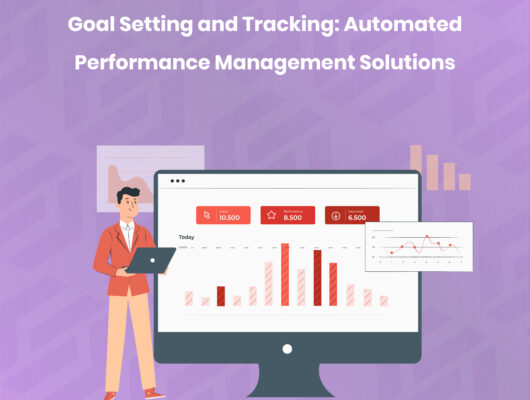It’s 2 AM on a sweltering July night, and your phone won’t stop ringing. Three emergency calls, two angry customers whose AC died during yesterday’s heat wave, and one technician who just called in sick. Meanwhile, you’re scrambling through sticky notes trying to figure out tomorrow’s schedule while your competitor’s automated system is already dispatching the closest available tech to each emergency call.
Welcome to the tale of two HVAC businesses in 2025.
One contractor is drowning in chaos, losing money on every inefficiency. The other is sleeping soundly while HVAC business automation handles the midnight madness, turns emergencies into profitable opportunities, and builds customer loyalty that lasts decades.
Guess which one you want to be?
Why HVAC Contractors Are Leaving Money on the Table
Last month, I sat down with Tommy, an HVAC contractor from Dallas who was pulling in $800K annually but somehow couldn’t afford to take a vacation. His story hit me like a blast of arctic air in August.
“I thought working harder was the answer,” he confessed. “Turns out, I needed to work smarter.”
Tommy discovered what thousands of HVAC contractors across America are learning: The difference between struggling and thriving isn’t about having more customers – it’s about serving them more efficiently.
The Hidden Profit Killers Every HVAC Business Faces
The Emergency Scheduling Nightmare When your AC fails in Phoenix during July, customers don’t care about your nice, organized schedule. They want it fixed NOW. Without HVAC scheduling software, every emergency becomes a domino effect of chaos.
The Seasonal Roller Coaster Summer brings the gold rush, winter brings the drought. Most contractors ride this roller coaster white-knuckled, but smart ones use automation to smooth out the peaks and valleys.
The Parts and Labor Puzzle Nothing kills profit margins like sending technicians to jobs without the right parts, or worse – with expensive parts they don’t need.
The Customer Communication Black Hole “When will you be here?” It’s the question that haunts every HVAC dispatcher. Without real-time updates, it becomes a full-time job just managing expectations.
What Is HVAC Service Automation? (And Why It’s Not What You Think)
Let’s clear the air about automation. We’re not talking about robots installing ductwork (though that would be cool). Automated HVAC services means smart systems handling the business side of your operation so you can focus on what you do best – keeping people comfortable.
Think of it as hiring a team of tireless assistants who never sleep, never make mistakes, and never ask for a raise.
The Core Components That Transform HVAC Businesses
| Business Function | Manual Process | Automated Process | Time Saved Weekly |
|---|---|---|---|
| Emergency dispatch | 45 minutes per call | 3 minutes per call | 12+ hours |
| Routine scheduling | 8 hours | 1 hour | 7 hours |
| Parts ordering | 4 hours | 15 minutes | 3.75 hours |
| Customer updates | 6 hours | 10 minutes | 5.8 hours |
| Invoice processing | 5 hours | 20 minutes | 4.7 hours |
| Total | 28+ hours | 2.5 hours | 25.5 hours |
That’s more than three full working days per week you get back to focus on growing your business instead of managing it.
The HVAC Automation Advantage: How Smart Systems Handle Your Biggest Headaches
Remember Tommy from Dallas? Six months after implementing HVAC contractor management software, his story changed dramatically.
“Last week we had five emergency calls come in during a busy afternoon,” he told me. “Before automation, that would have meant chaos, angry customers, and overtime costs. Now? The system automatically dispatched the closest available tech to each call, sent customers real-time updates, and even ordered emergency parts to be delivered directly to job sites.”
The result? Five happy customers, no overtime, and $3,200 in additional revenue that would have been lost to inefficiency.
How HVAC Field Service Automation Actually Works
Modern HVAC service software connects every piece of your operation like a well-designed HVAC system – everything works together seamlessly.
Smart Dispatch in Action: When Mrs. Johnson’s AC dies at 3 PM on a Tuesday, here’s what happens automatically:
- Instant Assessment: System checks her service history, equipment type, and warranty status
- Optimal Assignment: Identifies the closest technician with the right skills and parts
- Automatic Communication: Sends Mrs. Johnson a text with tech details and arrival time
- Route Optimization: Adjusts other appointments to minimize drive time
- Parts Intelligence: Ensures technician has likely needed parts or expedites delivery
All of this happens in under 60 seconds, while you’re focused on more important things.
The Seasonal Success Strategy: How Automation Handles Peak Demand
Here’s where HVAC business automation really shines. While other contractors panic during heat waves or cold snaps, automated systems thrive on the chaos.
Peak Season Performance Optimization
Predictive Scheduling: Advanced systems analyze weather forecasts, historical data, and equipment ages to predict service demands. When the weather service predicts a heat wave, your system is already adjusting schedules and ordering parts.
Dynamic Resource Allocation: During peak times, automation helps you maximize every technician hour through:
- Intelligent route planning that minimizes drive time
- Skill-based task assignment for faster completion
- Automatic overtime alerts to control costs
- Customer communication that reduces callback frustration
Emergency Response Excellence: When demand spikes, HVAC dispatch software becomes your secret weapon:
| Peak Season Challenge | Automated Solution | Business Impact |
|---|---|---|
| Overwhelming call volume | Auto-routing and prioritization | 60% faster response times |
| Technician availability | Real-time capacity tracking | 40% more jobs completed |
| Parts shortages | Predictive inventory management | 25% reduction in delayed jobs |
| Customer communication | Automated updates and notifications | 80% fewer complaint calls |
Frequently Asked Questions: HVAC Automation Demystified
What Is Automation in the HVAC Context?
HVAC workflow automation isn’t about replacing your expertise – it’s about amplifying it. Think of it as upgrading from a manual thermostat to a smart one. The heating and cooling still happen the same way, but everything becomes more efficient and responsive.
In practical terms, automation handles:
- Scheduling and dispatch decisions
- Customer communication and updates
- Inventory and parts management
- Invoicing and payment processing
- Performance tracking and reporting
How Can Automation Help HVAC Companies Specifically?
Unlike other service businesses, HVAC companies face unique challenges that automation addresses perfectly:
Temperature-Driven Urgency: When someone’s heat goes out in January, every minute matters. Automated systems respond instantly while manual processes create dangerous delays.
Seasonal Demand Swings: HVAC maintenance software helps smooth out the feast-or-famine cycle by automating preventive maintenance reminders, extending your revenue throughout slower seasons.
Technical Complexity: Modern HVAC systems are increasingly complex. Automation helps match the right technician with the right skills to each job, reducing callbacks and improving first-time fix rates.
Equipment Lifecycle Management: Smart systems track equipment ages, service histories, and failure patterns to predict when replacements will be needed, creating upselling opportunities.
What About HVAC Customer Management Systems?
Here’s where automation gets really exciting. HVAC CRM systems turn every customer interaction into an opportunity for deeper relationships and higher lifetime value.
Automated Maintenance Reminders: Your system knows when Mrs. Peterson’s furnace filter needs changing and automatically schedules the appointment. She gets convenient service, you get recurring revenue.
Predictive Service Alerts: Based on equipment age and usage patterns, systems can predict failures before they happen. Imagine calling customers to schedule “pre-emptive” repairs that prevent emergency breakdowns.
Personalized Service History: Every technician arrives knowing the complete service history, previous issues, and customer preferences. It’s like having a photographic memory for every customer relationship.
The ROI Revolution: Numbers That Make CFOs Smile
Let’s talk about the numbers that really matter – your bottom line. The average HVAC contractor implementing comprehensive automation sees these improvements within the first year:
Direct Cost Reductions:
- Administrative Labor: 65% reduction in office staff overtime
- Fuel Costs: 35% decrease through optimized routing
- Parts Waste: 28% reduction in unused inventory
- Callback Rates: 42% fewer return visits
Revenue Increases:
- Service Capacity: 45% more jobs completed with same team size
- Emergency Premiums: 30% higher margins on after-hours calls
- Maintenance Contracts: 85% increase in recurring revenue
- Customer Retention: 52% improvement in lifetime value
Real Results from Real HVAC Businesses
| Company Size | Before Automation | After Automation | Net Improvement |
|---|---|---|---|
| Solo + Helper | $185,000 annual revenue | $275,000 annual revenue | +49% |
| 3-5 Technicians | $650,000 annual revenue | $1,050,000 annual revenue | +62% |
| 6-12 Technicians | $1.2M annual revenue | $2.1M annual revenue | +75% |
Advanced Features That Separate Industry Leaders from Followers
Once you’ve mastered the basics, HVAC contractor software opens up possibilities that most business owners never even consider.
Predictive Maintenance Revolution
Imagine if your system could analyze usage patterns, weather data, and equipment specifications to predict exactly when each customer’s system needs attention. That’s not future tech – it’s happening now.
Smart systems track:
- Runtime hours and cycle patterns
- Filter replacement schedules
- Seasonal usage variations
- Component wear predictions
- Energy efficiency trends
Dynamic Pricing Intelligence
Peak demand pricing, customer lifetime value adjustments, and real-time market analysis all happening automatically. You set the business rules, the system optimizes your profitability.
Integrated Marketing Automation
HVAC customer management extends beyond service into growth:
- Automated review requests after successful jobs
- Referral incentive programs that run themselves
- Seasonal promotion campaigns triggered by weather
- Equipment replacement notifications based on age and efficiency
The Competitive Moat: Why Early Adopters Dominate Their Markets
Here’s the uncomfortable truth: While you’re reading this, some of your competitors are already building unassailable advantages through service business automation HVAC solutions.
They’re not just working more efficiently – they’re delivering customer experiences that make price comparisons irrelevant. When customers know they can count on accurate arrival times, transparent pricing, and proactive maintenance alerts, they stop shopping around.
Future-Proofing Your HVAC Business
The HVAC industry is evolving faster than refrigerant regulations. HVAC field service automation isn’t just about solving today’s problems – it’s about preparing for tomorrow’s opportunities.
What’s Coming Next:
- IoT sensors that report equipment health in real-time
- AI-powered diagnostic tools that identify problems through audio analysis
- Augmented reality systems that guide technicians through complex repairs
- Blockchain-verified service records and warranties
- Fully automated seasonal system optimization
The contractors who master today’s automation tools will be ready for tomorrow’s innovations. Those who don’t will be left behind like R-22 refrigerant.
Your Blueprint for HVAC Business Transformation
We’ve covered the why, the what, and the how. Now comes the crucial part: taking action.
Step 1: Honest Assessment (This Week)
- Track how much time you spend on administrative tasks
- Calculate your current job completion rate
- Measure your average response time to service calls
- Document your biggest operational frustrations
Step 2: Research and Demo (Next Two Weeks)
- Evaluate HVAC contractor management solutions that address your specific challenges
- Request demos from top-rated providers
- Talk to other contractors who’ve made the transition
- Calculate potential ROI based on your current metrics
Step 3: Implementation Planning (Month 1)
- Choose your automation platform
- Plan your rollout strategy starting with highest-impact areas
- Schedule team training and system setup
- Set realistic expectations and success metrics
Step 4: Execution and Optimization (Months 2-3)
- Deploy core features systematically
- Monitor performance metrics closely
- Gather feedback from team and customers
- Continuously optimize based on real results
Conclusion: Your Moment of Truth
Here’s the bottom line: Every day you operate without HVAC business automation is another day your business runs inefficiently while your competitors pull ahead.
You didn’t become an HVAC contractor to spend your time chasing paperwork and managing chaos. You got into this business to solve problems, help customers, and build something valuable.
Automation gives you back the time and energy to focus on what matters most while technology handles the rest. The contractors who embrace this reality are building sustainable, profitable businesses that work for them instead of consuming them.
Tommy from Dallas summed it up perfectly: “I thought automation was just about efficiency. Turns out, it’s about freedom. Freedom to grow, freedom to innovate, and freedom to actually enjoy the business I built.”
The tools exist. The ROI is proven. Your customers are ready for better service.
The only question left is: How much longer will you choose chaos over cash?
Ready to transform your HVAC business from chaos to cash? The contractors who act now will dominate their markets for the next decade. Those who wait will spend that decade wondering what could have been.





